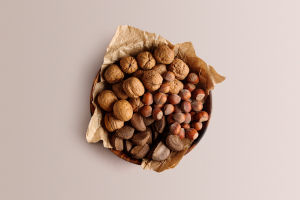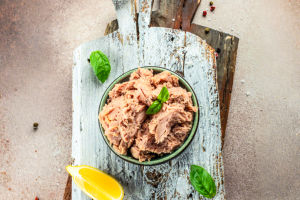Hello Lykkers! Welcome to the greenest season of the year! Spring brings with it a bright, crisp favorite—fresh asparagus! These vibrant stalks are available for just a few months, from late March to the end of May, and they add a refreshing flair to your meals.
From side dishes to main courses, asparagus can be the star of your spring table. Get ready to explore different varieties, learn how to select and store them, and most importantly—cook them in simple, mouthwatering ways!
The Beauty of Asparagus
Asparagus comes in different colors and flavors, each suited to different dishes. The green variety is the most familiar, known for its distinct herbal aroma and slightly grassy taste. White asparagus, grown underground to prevent sunlight exposure, offers a milder flavor and tender bite.
Then there’s the purple kind, especially those from Albenga, known for their subtly sweet flavor and delicate texture. Regional varieties like those from Zambana and Cimadolmo are cherished for their high quality.
Wild asparagus
In woodland areas, wild asparagus can be gathered in early spring. These slender stalks carry a slightly bitter note and are best enjoyed boiled or stirred into creamy dishes such as risottos. They should be picked early to maintain tenderness.
Health Benefits
Asparagus is low in calories and packed with water, fiber, and valuable nutrients including vitamins A, C, E, and K, along with essential minerals. It supports hydration and balance, making it a helpful ingredient in seasonal wellness routines.
Tips for Selection and Preparation
What to look for at the market
Choose asparagus with closed, firm tips and bright, sturdy stalks. To prepare, snap off the lower ends where they naturally bend—this removes the toughest part. Don’t discard the ends! Use them to make a flavorful vegetable broth for soups or risottos.
Cooking basics
Steam or blanch asparagus briefly to preserve color and texture. A drizzle of oil, a pinch of salt, and a splash of lemon juice bring out their delicate taste. Light pan sautéing also works well, especially when adding asparagus to pasta, rice, or baked dishes.
Three Must-Try Asparagus Recipes
1. Savory Asparagus Tart
Perfect for picnics, dinners, or brunches, this tart combines a flaky base with creamy filling and the gentle bite of asparagus.
Ingredients:
- Puff pastry sheet – 1
- Fresh asparagus – 300 g
- Ricotta – 250 g
- Grated cheese – 40 g
- Eggs – 2
- Black pepper – to taste
- Salt – to taste
- Olive oil – 1 tbsp
Instructions:
1. Preheat the oven to 180°C (350°F).
2. Wash and trim asparagus. Steam for 5 minutes and set aside.
3. In a bowl, mix ricotta, grated cheese, eggs, salt, and pepper.
4. Roll out the pastry in a baking pan and puncture the base with a fork.
5. Pour the filling into the pastry, arrange asparagus on top.
6. Drizzle with olive oil and bake for 35–40 minutes until golden.
7. Let it cool slightly before serving.
2. Light Asparagus Pesto
Ideal for pasta or as a spread on toasted bread, this spring pesto brings a refreshing flavor to your dishes.
Ingredients:
- Fresh asparagus – 200 g
- Blanched almonds – 40 g
- Grated cheese – 30 g
- Olive oil – 3 tbsp
- Shallot – 1 small
- Salt – to taste
Instructions:
1. Trim and slice the asparagus.
2. In a pan, heat 1 tbsp oil and lightly cook the chopped shallot.
3. Add asparagus and cook for 5–6 minutes until soft. Let cool.
4. Transfer to a blender with almonds, grated cheese, and oil. Blend until smooth.
5. Season with salt and use immediately or store in the fridge in a sealed jar.
3. Asparagus and Salmon Pasta
Quick, creamy, and satisfying—this pasta combines the richness of salmon with the freshness of asparagus.
Ingredients:
- Pasta (fusilli or penne) – 320 g
- Fresh asparagus – 200 g
- Cooked salmon – 150 g
- Olive oil – 1 tbsp
- Garlic clove – 1
- Salt – to taste
- Fresh parsley (optional) – chopped
Instructions:
1. Bring a pot of salted water to a boil and cook pasta.
2. Meanwhile, clean and cut asparagus into small pieces.
3. In a pan, heat oil and gently cook a crushed garlic clove, then add asparagus. Sauté for 7–8 minutes.
4. Add flaked salmon and cook for 2 minutes more.
5. Drain pasta and toss it into the pan. Mix well.
6. Garnish with chopped parsley if desired and serve hot.
How to Store and Enjoy All Year
To keep asparagus for longer, preserve it in oil or brine. Stored properly, it remains a great ingredient for quick meals or appetizers. Blanched asparagus also freezes well if packed airtight.
Final Words for Our Lykkers
Asparagus is not just a seasonal treat—it’s a versatile, nutrient-rich vegetable that fits beautifully into a variety of dishes. Whether baked, blended, or sautéed, these vibrant stalks add color and flavor to every meal. Try out these recipes while asparagus is in season, and discover new ways to bring spring into your kitchen. Enjoy every green bite, Lykkers!


